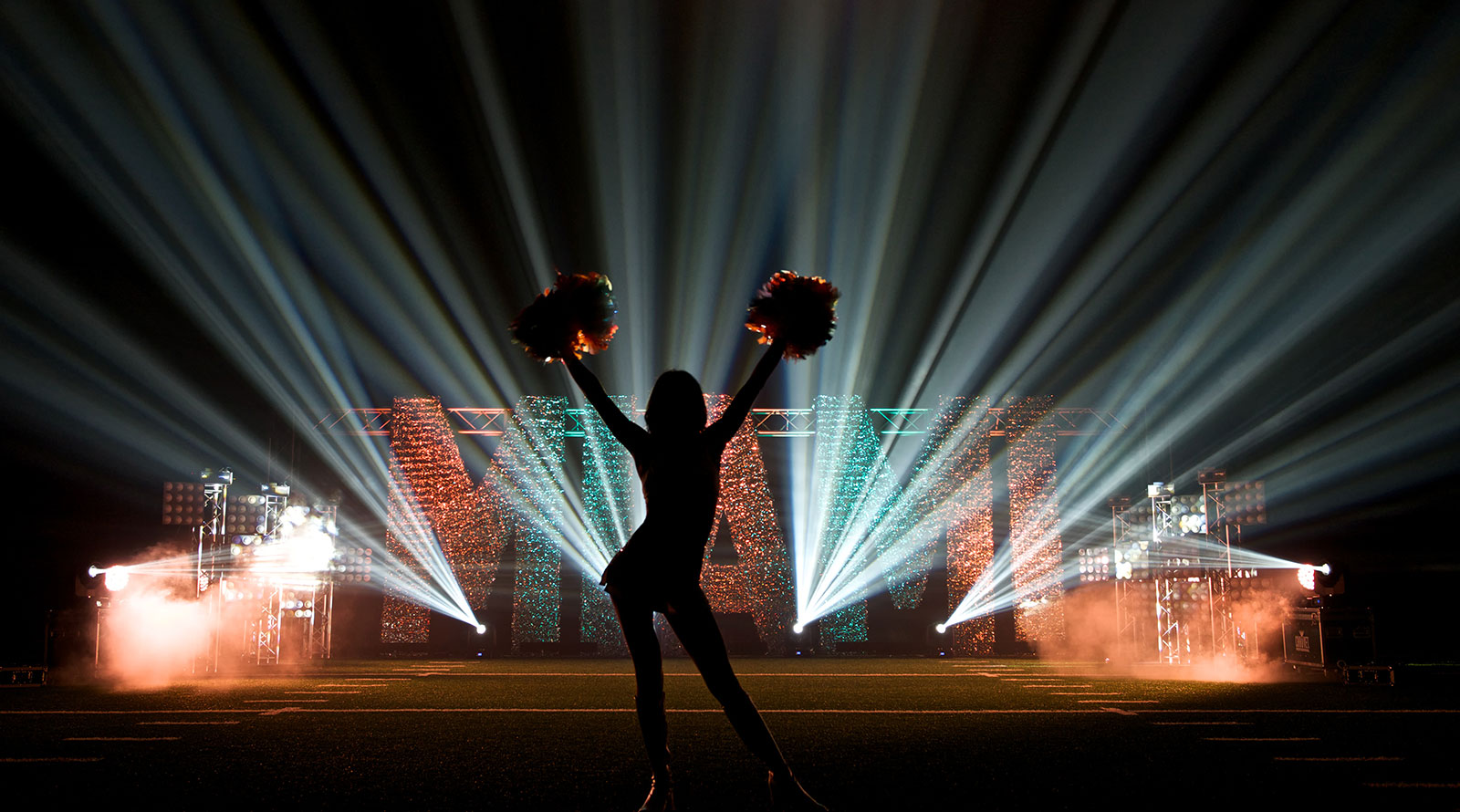Getting More From Less – Positive Usage of Negative Space
Posted on November 23, 2015Under natural light, there is always shadow. Look around you and you will see that almost every object you look at has some kind of shading on it. This helps our eyes to define dimension. Without shadow, or negative space, everything would look flat and two dimensional. This is something to think about when you are designing lights for staging.

Shadows from the tree on the left are casting over the wall and the ground. This shadow provides us with negative space and helps our brain understand dimension.
Having stereoscopic vision (or stereopsis) ensures that we can see in three dimension. Because our eyes are both facing forward, but are set of both sides of our head, each eye picks up different visual information and sends it to our brain. Try this…. Pick out an object look at it. Then close one eye and look at the object again. You will notice that the object looks slightly different and the dimension is gone. Our eyes are also trained to look for light and dark spaces to help us to determine what the shape is that we are looking at. By seeing the shadows, we can get a good idea of how big something is, what it’s shape is, and relative distance from one thing to another.
Enough science. Let’s talk about practicality. In stage lighting, one of our goals is to get as much light from our light source to the object we are lighting as possible, typically. We talk about flat beams all of the time and how these beams get more light to the stage. This is absolutely true. Having a larger beam angle and either a tiny or non-existent field angle is always a good goal when picking a beam or spot fixture. So, with lights like this, how do we create definition with flat light? Take a walk through the woods during a sunny day. The sun creates extremely flat light, but you will notice that there are shadows all over the place. As light travels through the trees, shadow is created. These shadows create a ton of definition on the ground and make your eyes really happy. Another example is a sports field. Stadium light is really flat and even when it hits the ground, but the players themselves create shadow so that your brain can see the dark spots on the ground and define dimension. We can do very similar things on stage with gobos and set design.
When designing front and side light positions, many designers will use break up gobos to light their subjects in addition to wash lights. This will help to add in shadow and negative space on their subjects and help them to appear more natural. For this, I like foliage breakups. I will typically light a subject either from the front or the side with a foliage breakup, and have it slightly out of focus so that the shadows appear more natural. By making this addition, I am helping to make our brains think that the subject on stage has dimension and depth.
The same goes for scenery. Having shadow on scenic elements helps your brain to define what the object is supposed to be. This means that if you are using painted flats, you have to paint in shadow to make the appearance of dimension. If your surface as actual texture and angles that create shadows, use them to your advantage. These breakups will make your set much more realistic. I also use gobos in hard focus coming in at steep angles to create areas of shadow and light. This helps to make the set more interesting and less two dimensional.

The above shot shows great usage of negative space and texture. The MIAMI sign has a shimmer texture on it. The letters are uplit from an angle to get the most shadow possible to give it dimension. The black background further adds contrast, then the silhouette creates additional negative space to add to the overall texture and create a very dynamic effect.
By using shadows to create negative space, you will be actually making you scene appear more natural. Never forget that lighting in nature is rarely balanced and without dark spots. There are shadows everywhere, embrace them in your designs as you do in real life.